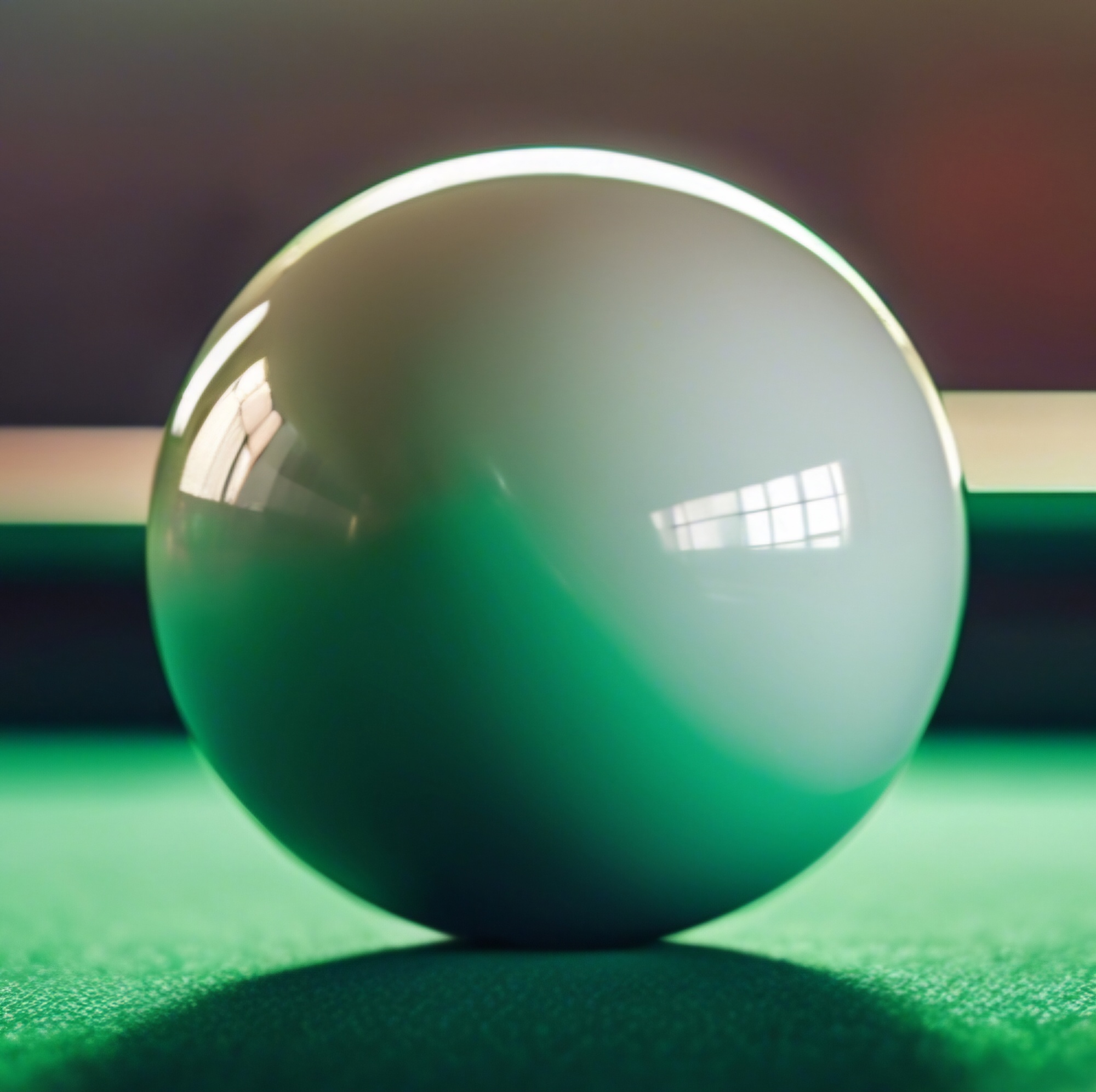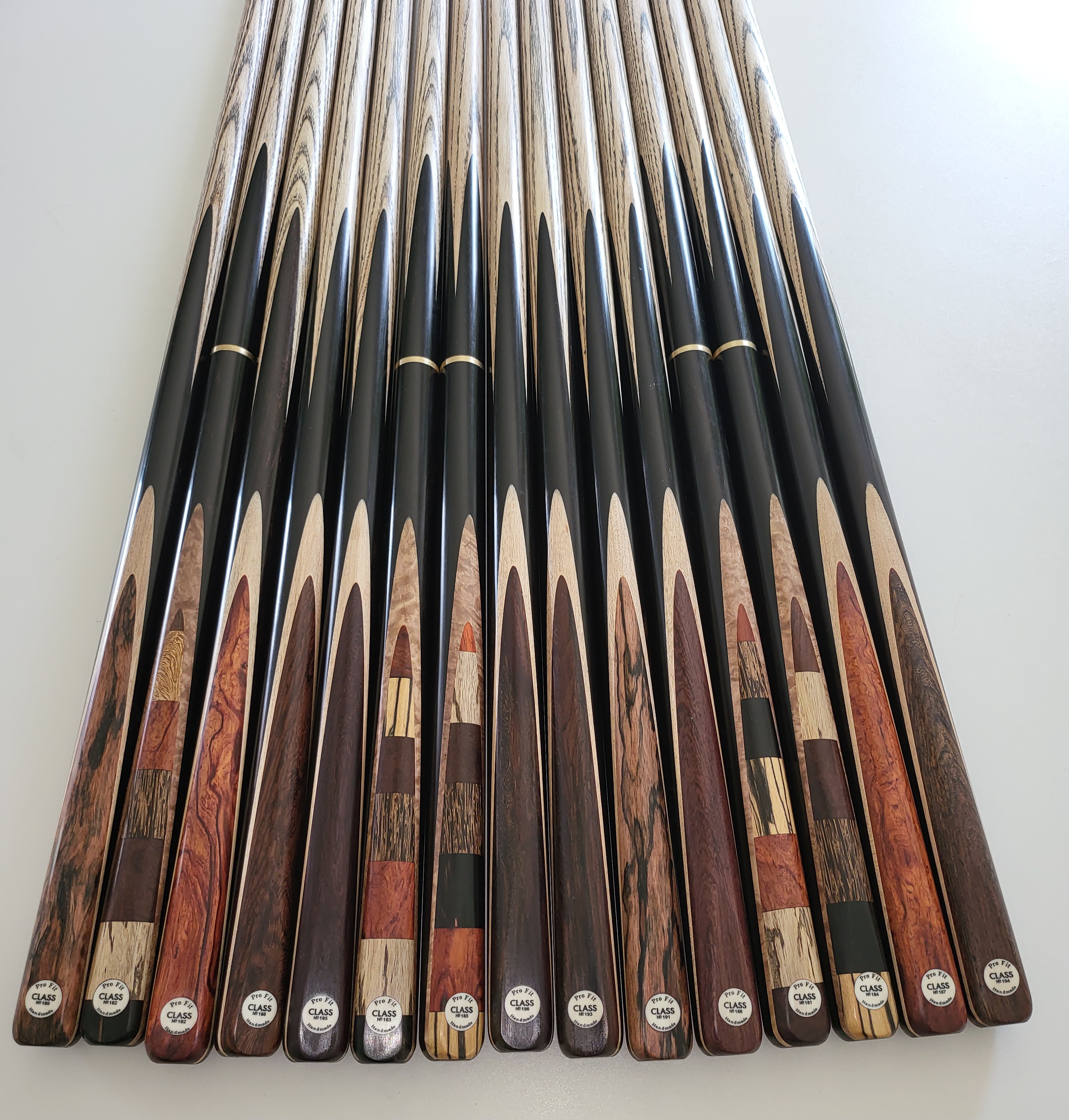Categories
Categories
Blog
Let's talk cue-ball physics. This episode: Object-ball
Posted by on
Object-ball
--- The object-ball is the ball being hit by the cue-ball. If the cue-ball hits the object-ball full in the face, it will travel straight forward if no side spin is applied to the cue-ball. When it is hit by the cue-ball with side spin at slow speed, it will slightly nudge to the left or right. If hit with backspin or topspin, it will affect the forward motion of the object-ball. For example, if hit by the cue-ball with screw, the forward motion will increase, allowing it to move forward after making contact with another ball. When the object-ball is hit at a large angle, it will move sideways and be nudged off line in the direction of the cue-ball's travel. The newer the balls, the less this will occur. There is no need to mention that if one wants to pot the object-ball, it needs to be hit/aimed correctly. The object-ball is the ball that must be potted to commence or to keep a break going, so the state of this ball is very important. A dirty ball will rattle in the pocket more easily, as it will grip on the cushion cloth, resulting in a missed pot. This is especially true along the cushion rail. Shiny, slippery clean balls will not grip the cushion cloth and will slide more easily into the pocket. Additionally, the distance the object-ball travels will decrease when playing with dirty and dull balls. A clean object-ball will travel further because of the initial slide after impact by the cue-ball, and when playing a split, the balls will open more easily. However, because the balls are so clean—particularly when playing with a new set of balls—when they hit the cushion, they will start to slide out of the cushions, resulting in loss of ball run. Therefore, with a new set of balls, you will need to hit into the cushions a little harder to achieve the desired position.

Let's talk cue-ball physics. This episode: Stun and Screw
Stun and Screw1/ StunA stun shot is mostly used to freeze the cue-ball after impact with the objectball. In this episode we will talk about stun and screw combined, because when the distance between the cue-ball and objectball gets higher then you will need to play lower on the cue-ball wich actually is a screw shot. [...]

Let's talk cue-ball physics. This episode: Top spin
Top spin center striking.If you hit anywhere above center of the cue-ball you are applying top spin. When top spin is applied the cue-ball will accelerate faster and travel further after making contact with another objectball. This being said when playing a hard topspin shot there will be a back arc because of the mass [...]

Let's talk cue-ball physics. This episode: Center ball striking.
Let's talk cue-ball physics. This episode: Center ball striking. Striking the center of the cue-ball has a lot of benefits to improve your game. It means striking along the vertical and horizontal middle of the cue-ball. When the cue ball is struck here it will have only a little of cloth friction resulting in a [...]

UNDERSTANDING CUES AND CUE BALL DEFLECTION
#The Art of Snooker: Understanding Cues and Cue DeflectionSnooker is not just a game of skill; it's a game of precision, strategy, and finesse. At the heart of this beloved sport lies the snooker cue, a seemingly simple stick that plays a pivotal role in a player's performance. Understanding the nuances of snooker cues and [...]

HOW TO CHOOSE A SNOOKERCUE
Offering players the opportunity to try out different cues and determine their preferred deflection degree has several advantages:1. Personalized Experience: Every player has their own unique playing style and preferences. By allowing them to test different cues, they can find the one that suits their playing style, grip, stance, and stroke the best. This personalized [...]
 Loading... Please wait...
Loading... Please wait... 